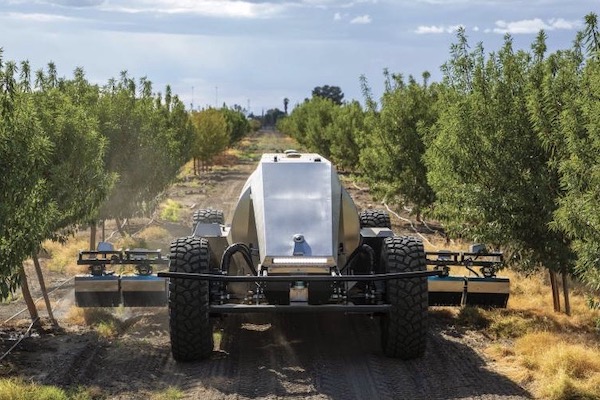Published on the 16/10/2025 | Written by Heather Wright

APIs, adoption, ambition and killing sacred cows…
New Zealand’s agritech innovators are discovering that exporting isn’t just about scaling. It’s about reinvention.
Brendan O’Connell, AgriTechNZ chief executive, says while that might sound obvious, it’s often not fully understood, and it’s hard to do.
“It’s not just adjusting what you’ve got or taking what you’ve got and trying to set up in that market. You’ve got to reinvent what you’ve got in that market because even markets that seem similar are structured differently and the relationships between farmers and their advisors or processors, or the way farming happens will be done significantly differently,” O’Connell told iStart.
“Agritech is both a traditional and a rising star for New Zealand.”
It’s one of many insights coming out of a series of AgriTech Unleashed roadshows bringing together tech companies, farmers, researchers, investors and enablers with the aim of accelerating innovation and profitability and creating resilience in New Zealand’s $2.5 billion farming and food market.
The reinvention mindset will be part of a new export playbook being developed by AgriTechNZ on the back of the roadshows. It’s a practical guide, built from real experience, not theory, showing the battle stories of peer and near-peer companies and highlighting how they found success, in an effort to help other companies avoid common pitfalls and accelerate their global expansion.
“Even our best companies are going through that learning stage and having to go through significant periods of reinvention – it’s the biggest story that has been shared [at Unleashed].”
O’Connell is clear on the importance of New Zealand’s agritech sector stepping up their export moves: “We’ll always be underinvesting in agritech if we don’t design for the global market. And when you look at what’s needed within farming systems, what some of those challenges are and what the potential is, our worst mistake would be to underinvest.”
He says if local farmers and growers are to benefit from the best technologies, they need to be designed with the mindset that there is a global market because that then puts the right resources in place and the scale justifies the investment.
Fixing the data plumbing
Another key issue for the sector right now is what AgriTechNZ is calling ‘digital dexterity’. It’s stuff that is ‘really fundamental’ – “And when I say fundamental, I mean it’s really boring!”, O’Connell quips.
It’s also really necessary, and it’s the issue of data interoperability.
A bugbear of farmers and growers for over a decade, the last couple of years have seen ‘dramatic’ changes – thanks in part to ongoing demands from farmers and growers which O’Connell says are finally getting through to technology providers and becoming a core activity.
Fonterra has played a ‘really strong role’ in the change, he adds. The dairy cooperative aims to remove one million ‘compliance’ hours from the sector each year. Earlier this year, it said 507,000 hours had already been saved through audit and record changes.
For O’Connell and farmers and growers, a key part is ensuring data is flowing as easily as possible so they can share data between systems to access higher-value contracts – including proving environmental and animal welfare outcomes – and improve operational insights, without having to constantly rekey it.
“Stitching together different data sets is a vital part of it.”
That means having the digital plumbing such as fully functional APIs.
The roadshow workshops are helping build an inventory of APIs, making them discoverable and usable across the sector.
“Unless you’ve got the right relationships or you’re in the right room, you might not know what’s possible,” O’Connell says.
But discoverability isn’t the only thing that needs to happen. “There are definitely gaps and there are definitely still challenges in some data sets.”
The challenge isn’t just technical, it’s also commercial. Farmers may own the raw data, but companies often add layers of insight and IP. Sharing that data equitably, while still incentivising innovation, remains a delicate balancing act.
“There’s a whole mindset shift happening now – more openness, more collaboration – but there’s still a long way to go.”
Killing sacred cows
On-farm technology uptake and what adoption really looks like is the third area of discussion.
For years the narrative around technology adoption has often been focused on farmers – too old, too conservative, too slow. AgriTech Unleashed aims to flip the script.
“Often the onus is placed on farmers to adopt,” O’Connell says. “But we want to take a bit of self-responsibility as a sector and ask: How well are we doing in product management?”
One of the Unleashed workshops, Sacred Cows, has seen participants unpacking common myths about adoption. One of the most persistent? That older farmers resist technology. The reality is many are eager to embrace digital especially if they’re in a growth period or preparing for succession or sale.
“It’s not about the age of the farmer. It’s a lot more about the stage of the farm.”
O’Connell is calling on agritech companies to take a moment to reflect on how well they are doing in product management and what they could do better.
He acknowledges too, that there is still an element of product fit and readiness for market.
“There’s been a lot of investment focus around farming and growing food and that means the cadence or the number of businesses coming through has grown significantly and that’s created a pressure point.”
Products need to be tested, refined and ready before they hit the paddock. “It’s not that they won’t be fit for purpose, it’s just that when they hit farms, sometimes they’re not yet fit for purpose. It’s not like everyone is getting it drastically wrong. It’s just that the stages of maturity that have to happen in development have to happen – and they should be happening before they get to the farm.”
A product management maturity map is being developed to help businesses assess where they stand and how to improve.
Collaboration, capability and Callaghan’s absence
Despite momentum in the sector, there are gaps. The closure of Callaghan Innovation has left a hole in early-stage support, particularly around preparing businesses for global markets and product-market fit.
“There’s been a pause slapped on the early-stage ecosystem,” O’Connell says. “We’re all waiting to see what the next science system review delivers.”
He’s keen to see NZTE get additional funding and resourcing to provide specific support for earlier stage businesses, so they’re covering the early-stage pipeline as well as growth and scale stages.
“But to do that it’s not just going to be an extension of what it already does, it’s got to be additional funding, additional resourcing and a targeted approach to what those businesses need, which will be different to what other NZTE clients currently need and get.”
O’Connell says New Zealand’s agritech sector is growing at least as fast, or even faster, than the global agritech market, with compound annual growth rates hitting 14-16 percent growth for many local players, versus a global average of around 12-14 percent.
Companies like Bovonic and Aimer are getting into the global market more quickly than was previously thought possible – doing a couple of seasons in New Zealand before going straight into Australia or Europe. Big players like Halter are seeing fast growth rates – and while there is a difference between their valuation and revenues, O’Connell says the rate of valuation and investment means their revenues are growing fast and they’ve put resources in place and entered new markets much faster with the capability to win large contracts and deliver on them.
“They’re demonstrating that there’s a rate of growth possible for agritech that hasn’t been common in the past.”
And older, established players such as Gallagher are also continuing to make external investments and collaborations, speeding up their rate of growth and opening new product and market opportunities.
“We’re doing well, but there’s opportunity to do even better. It’s a positive story, but it could be an even better story and New Zealand needs it to be a better story,” he says, taking aim a the government, saying agritech is ‘literally getting on despite the government’.
“The government talks about being open for business, but they’re not being very specific around what our business is. And one of our significant businesses is agriculture and the way we do it. We think there should be a lot more focus on what that actually means – how do we develop the strength to deliver more?,” he says.
“Agritech is both a traditional and a rising star for New Zealand. There’s exciting stuff happening in the sector and it’s a space where technologists can make a real impact.”



























